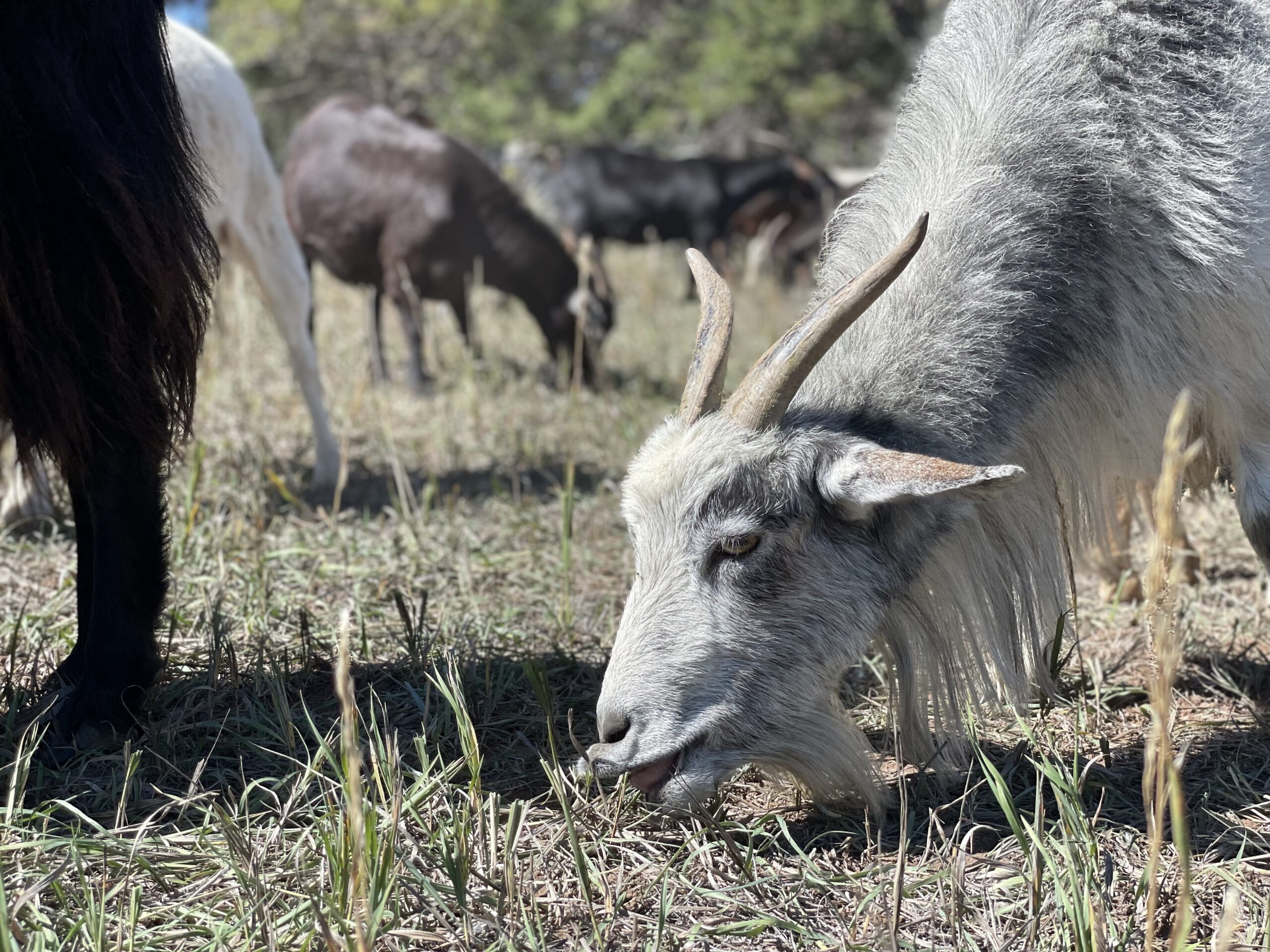
A group of horse trailers pulls up to a trailhead outside of Carbondale. The doors open and more than 800 goats jump out onto the gravel parking lot. The goats head straight for the closest grassy hill and immediately start chomping away at the ground.
This is what these goats are here to do — eat, poop and stomp around, grinding their manure into the soil. The goats are snacking on a type of wheatgrass that once fed livestock at Sutey Ranch, which is overgrown and unappetizing to the local elk and deer.
“Our hope is, if we can kick back some of these grasses, improve the soil and make room for some other more desirable plants to grow, the fields are going to be even more valuable for wildlife,” said Hilary Boyd, a wildlife biologist with the U.S. Bureau of Land Management.
This is one of the first projects goat herder Lani Malmberg has worked on with the BLM. She calls to her border collie, Rosco, to move the goats to where she needs them. Malmberg and her intern then unroll a portable electric fence around the herd, which quietly chews away at the ground.
Malmberg stays in a camper on the job site with her goats. She grew up raising cattle and went to graduate school at Colorado State University to study weed management. There, she learned that goats are good at eating weeds and clearing up pesky plants. She bought a herd of cashmere goats in 1996 to start her business managing private and public land without using pesticides or heavy machinery.
Malmberg’s goats move around the country to work on different land-management projects. The animals clear noxious weeds and help with erosion control along rivers. The goats also eat brush that could fuel big wildfires, a job for which Malmberg and her herd are increasingly contracted.
Climate change is leading to hotter and drier conditions in the West and bigger and more frequent wildfires. When Malmberg and the goats finish at Sutey ranch, she’ll pack them up and move them to another BLM project where they’ll clear oak brush near an area torched by last year’s Grizzly Creek fire.
Malmberg’s goats were grazing that spot when the fire broke out. She said it was terrifying — she, her son and his wife, and over 1,000 goats ran down the mountain away from the flames.
“The bears and mountain lions were running with us, we were all running together,” Malmberg said.
Malmberg is glad to finally work with federal land managers, which control nearly half of the land in western states. She said the BLM should try new ways to care for public land with the warming and drying climate.
Boyd, the BLM wildlife biologist, wants to use the goats for another project. The agency cleared wildfire fuel from an area 15 years ago, but now those plants are starting to grow back. It may not be possible to clear that land with a controlled fire due to dry conditions and nearby homes and private land.
“We're thinking that having the goats go in and eat back the brush might be the best way to maintain the treatment,” Boyd said.
The goats will return to Sutey Ranch next year, and possibly for the next decade, to complete the work of restoring the former grazing land. Boyd says she’s happy to work with the goats, even if the job takes a little longer.
- After 20 Years Of Drought, Western Slope Ranchers Face A Choice — Keep Adapting, Or Move Along
- Dry Soils And Drought Mean Even Normal Snowpack Can’t Keep Up With Climate Change In The West
- Human-Caused Climate Change Is Worsening The Megadrought Gripping Colorado, NOAA Scientists Say
- This Was The Second Hottest Summer On Record For The Western Slope

















